
Forest Enrichment with the University of the Virgin Islands at Sandy Point
Thus far, 2016 has seen us busy with field activities and growing trees in our nursery. I would like to take advantage of this rare office-day to share with you one of our last projects of 2015.
Geographic Consulting finished off 2015 with an exciting forest enrichment project that focused on the endangered plant species, Vahl’s Boxwood (Buxus vahlii). We partnered with Michael Morgan of the University of the Virgin Islands and the US Fish and Wildlife Service at Sandy Point National Wildlife Refuge. The project was funded by US Fish and Wildlife Service. The goal was to create a new stand of the federally endangered Vahl’s Boxwood tree (Buxux vahlii) while improving forest health.
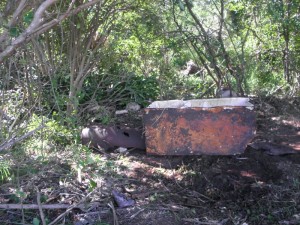 The staff at Sandy Point National Wildlife Refuge thoughtfully selected an area inside the refuge that had once been used as an illegal dump site and was dominated by mostly exotic invasive plants. [More on invasive plants in the US Virgin Islands here] It was the perfect location for this project, because the gap/disturbance created by our work was immediately filled with desirable plants.
The staff at Sandy Point National Wildlife Refuge thoughtfully selected an area inside the refuge that had once been used as an illegal dump site and was dominated by mostly exotic invasive plants. [More on invasive plants in the US Virgin Islands here] It was the perfect location for this project, because the gap/disturbance created by our work was immediately filled with desirable plants.
The first part of the field work was to remove stands of invasive plants, such as tan-tan (Leucaena leucocephala) and mother in-law’s tongue/snake plant (Sansevieria trifasciata). Once we had clearings, we were able to scoop up trash that had been there for years. In total we removed two car frames, 4 ovens, 4 or 5 refrigerators and a number of other hot water heaters and the like. The trash was hauled away in bins.
The tan tan was removed and then the stumps were sprayed with a specialized, root-killing herbicide. This method allows us to use a minimal amount of chemical and apply it directly to the target plant. The blue dye ensures tan tan stumps are neither forgotten nor sprayed twice.
The snake plant is far more difficult to control because it requires removal of the roots. The orange, starchy roots of these plants quickly grow back and are notoriously difficult to eliminate. We scooped out roughly 6-8 inches of soil and roots and mounded it. In this way, we hoped to smother some while creating clearings where we could plant desirable plants.
In the freshly cleared spaces we created we planted desirable, native plants. The project focused on federally endangered Buxus vahlii, grown by Michael Morgan in his greenhouse at the University of the Virgin Islands.
Claudia Lombard of the US Fish and Wildlife Service at Sandy Point provided young Agave eggersiana plants, which are also federally endangered.
Several other native trees were installed in the clearings we created, including lignum vitae (Guaiacum officinale).
We used our “tree auger” for the larger plants and because we planted roughly 75 plants over the course of 2 days.
Research shows that watering trees in the field on the day they are planted significantly improves survival. Each tree we planted received roughly 5 gallons.
Historically, we have had over 80% survival when we select the appropriate native tree for the site, follow Best Management Practices for planting and water as needed after planting. We expect similar results with our US Fish and Wildlife/University of the Virgin Islands endangered plant project.


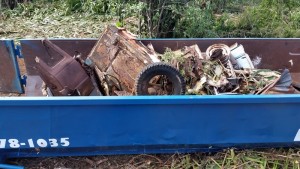


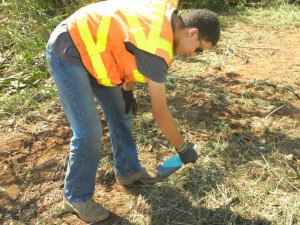



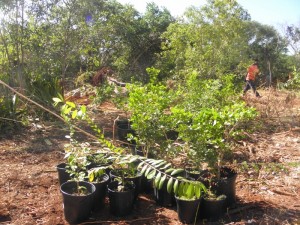
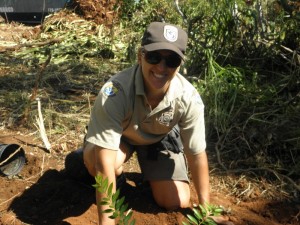

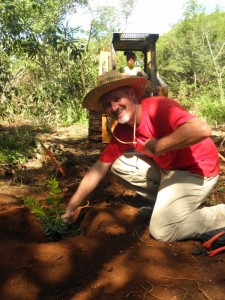



Comments, Questions? Contact Us.